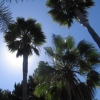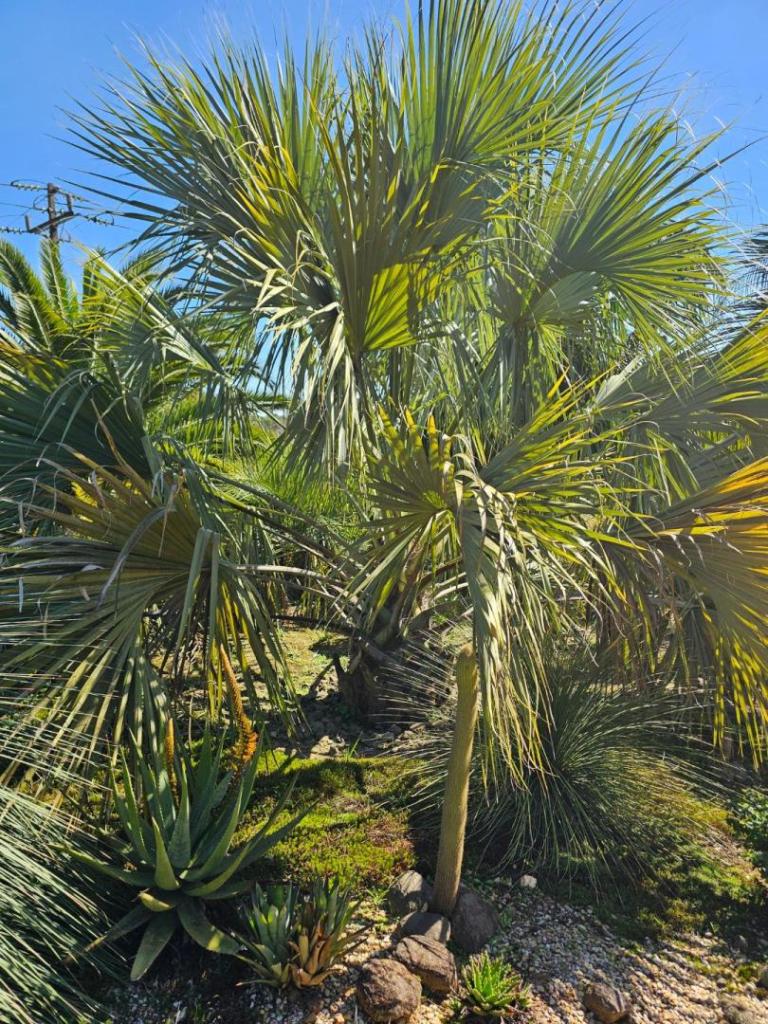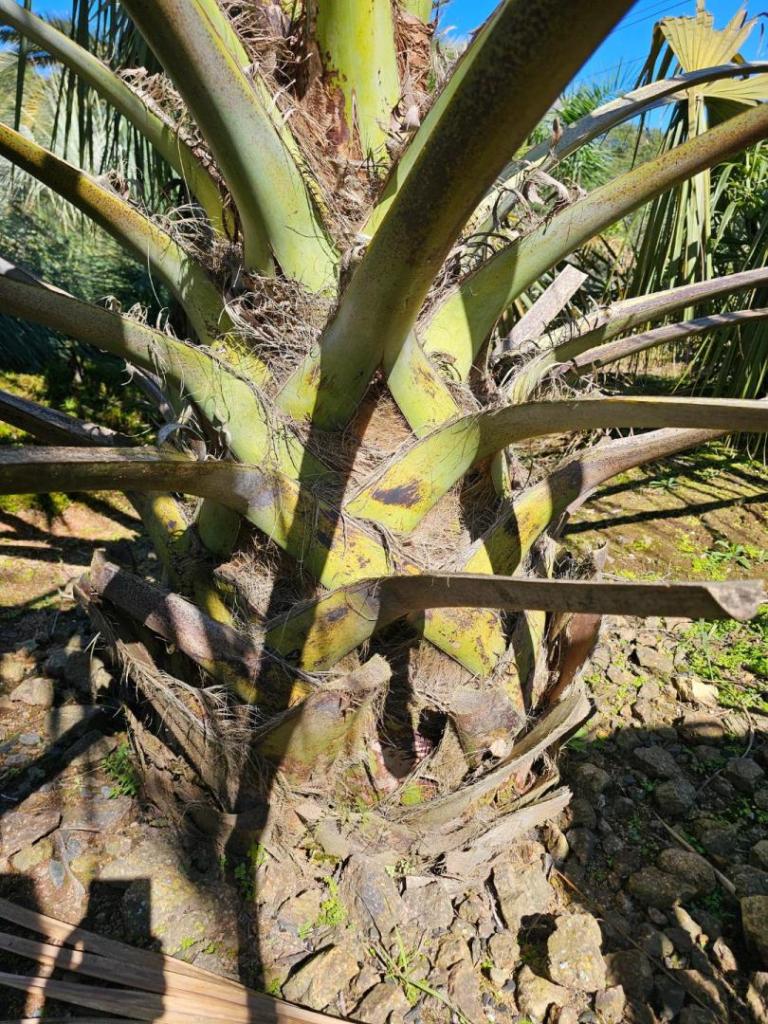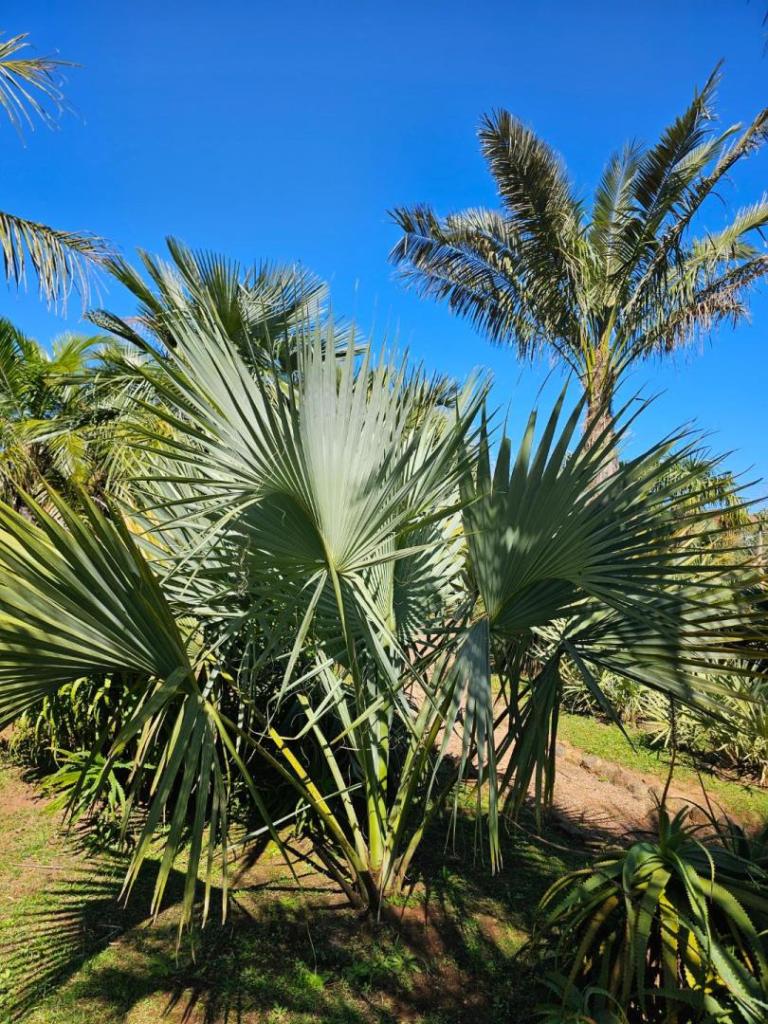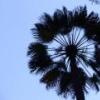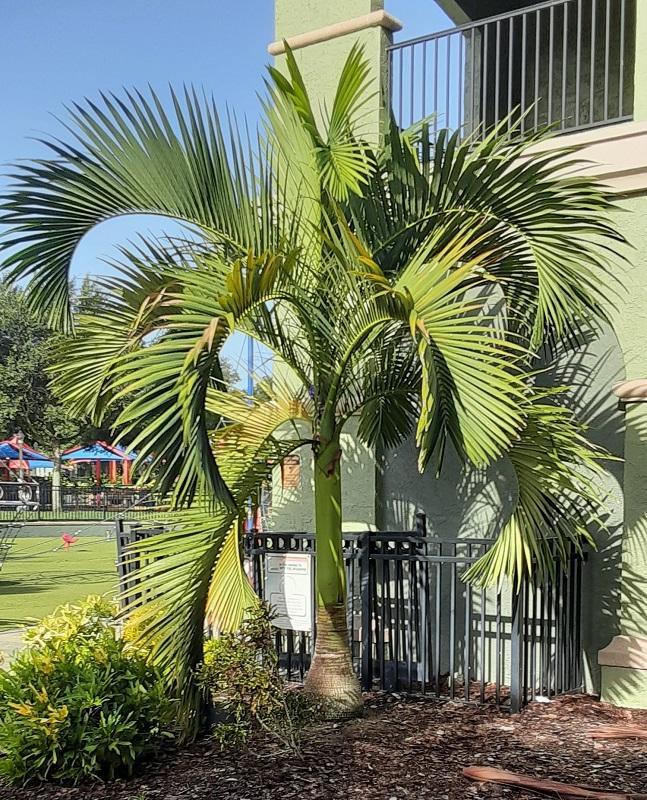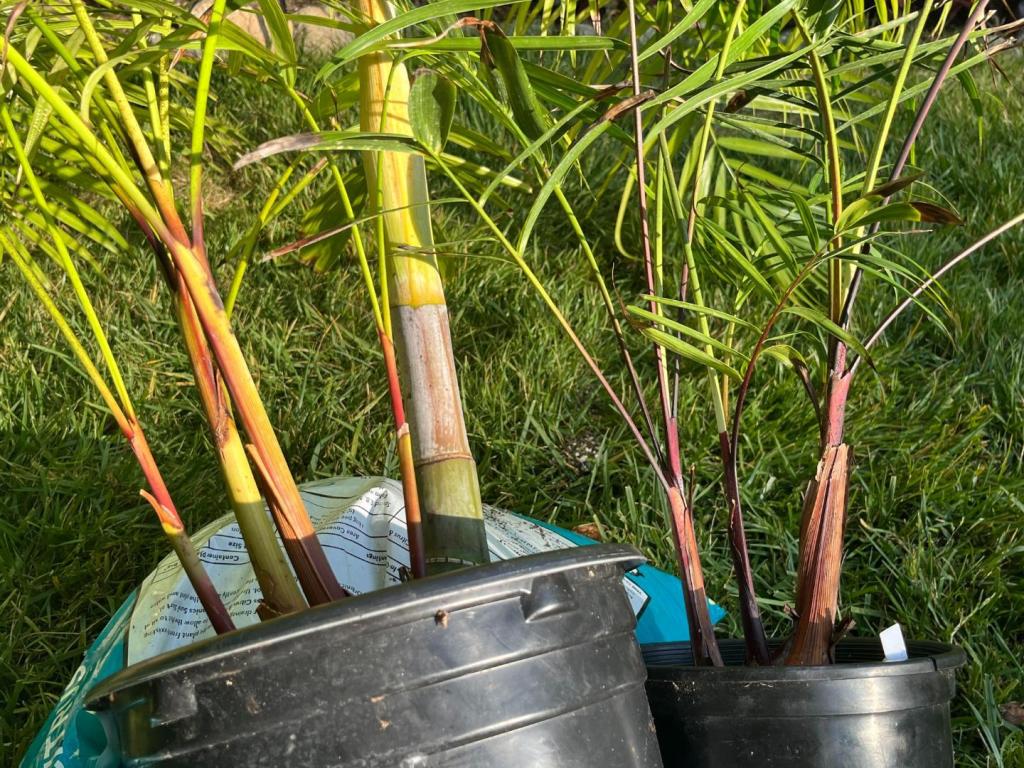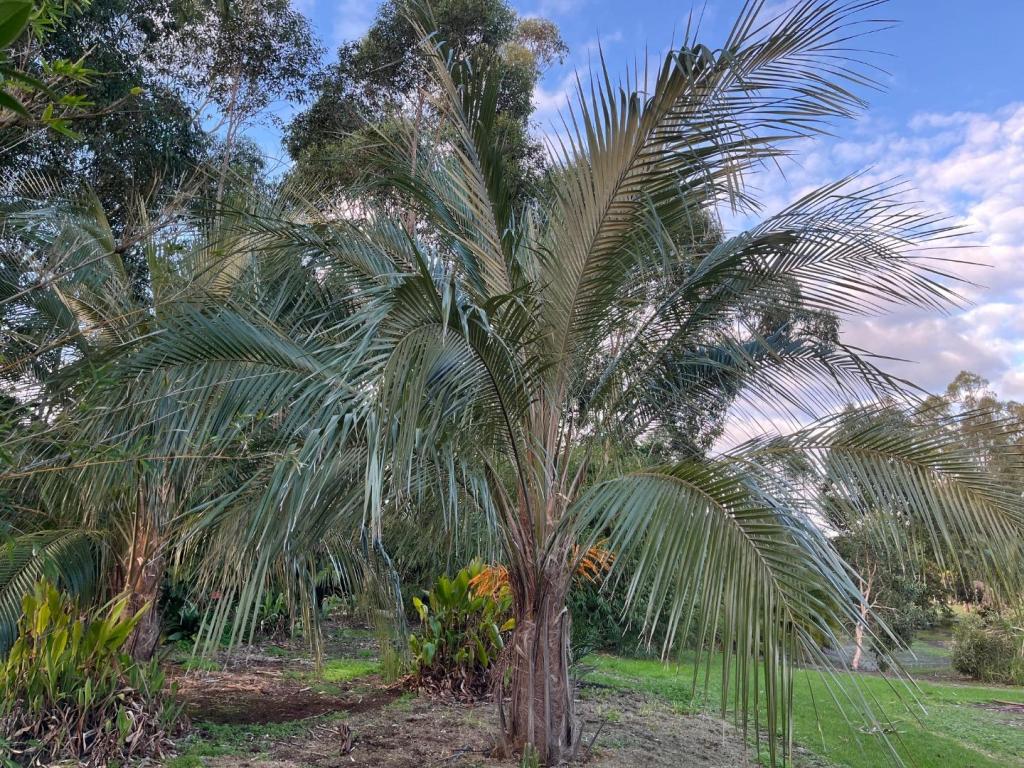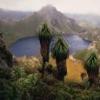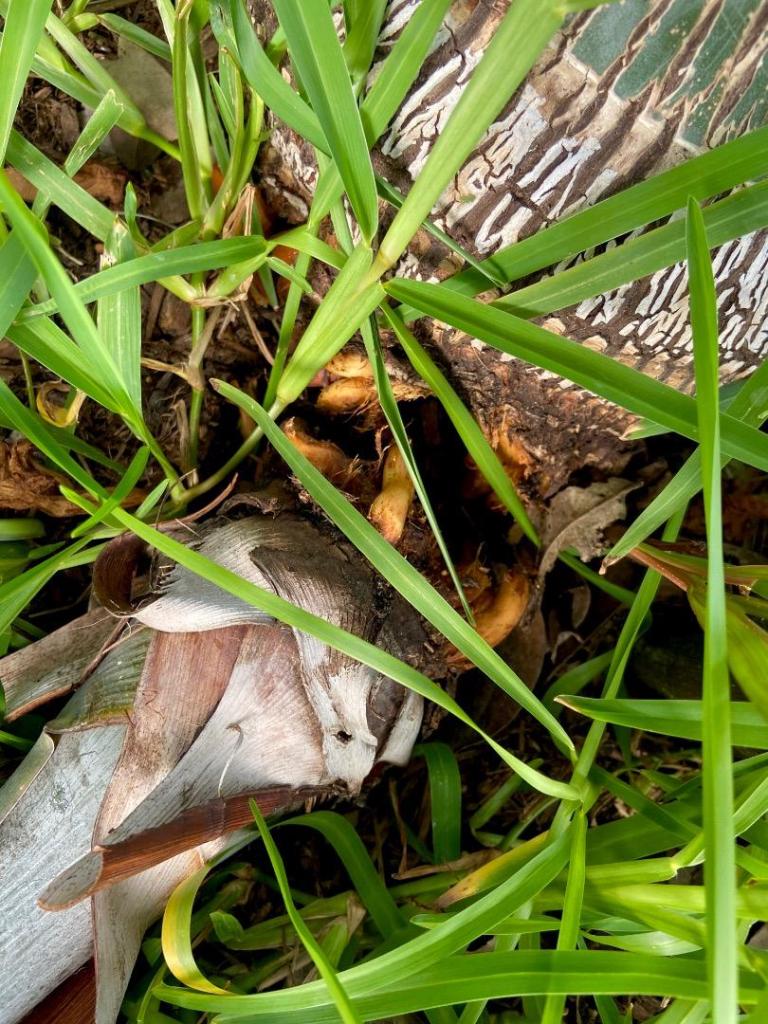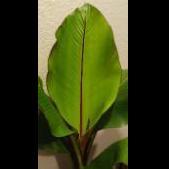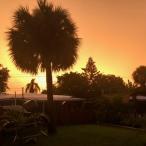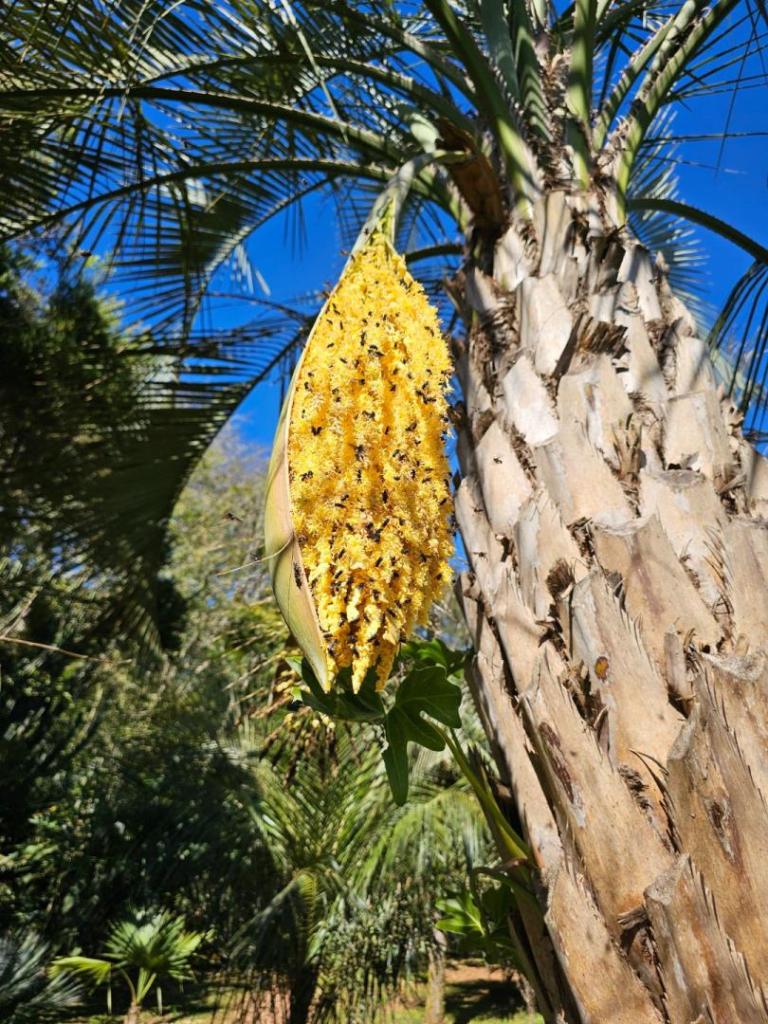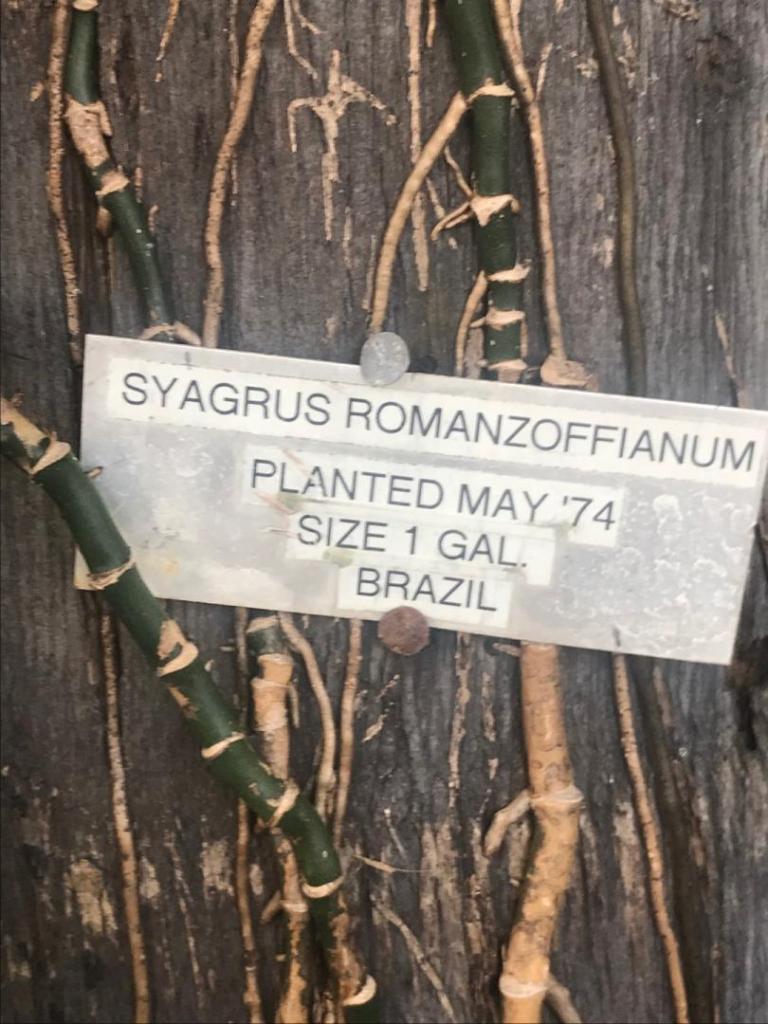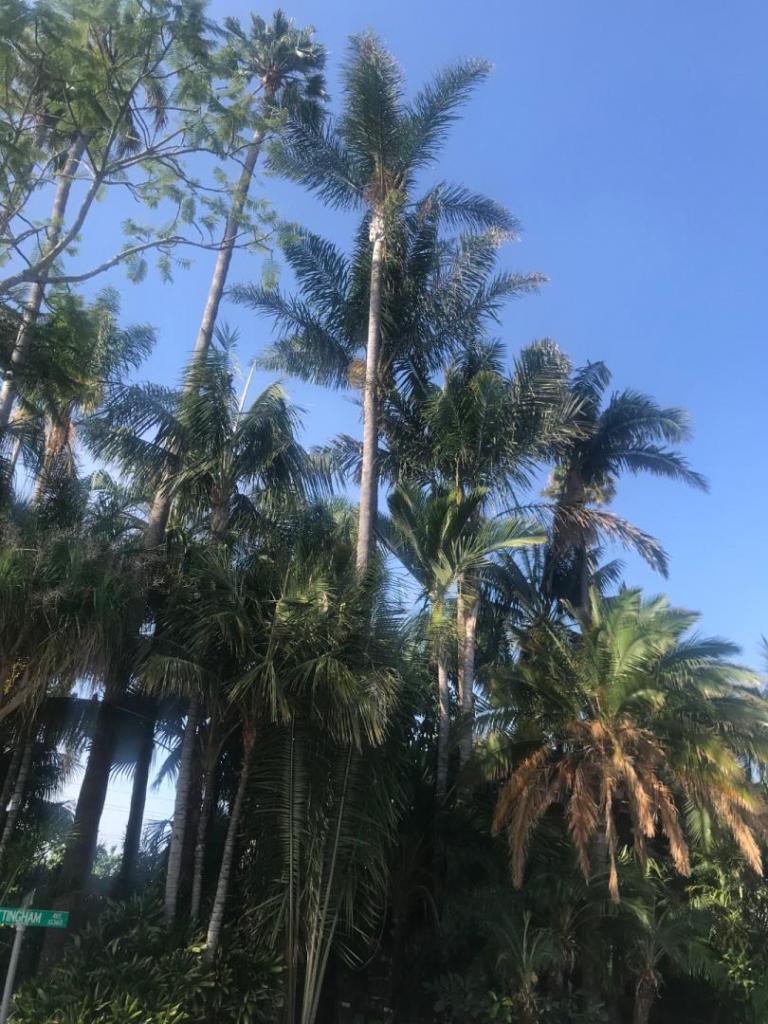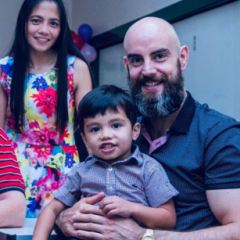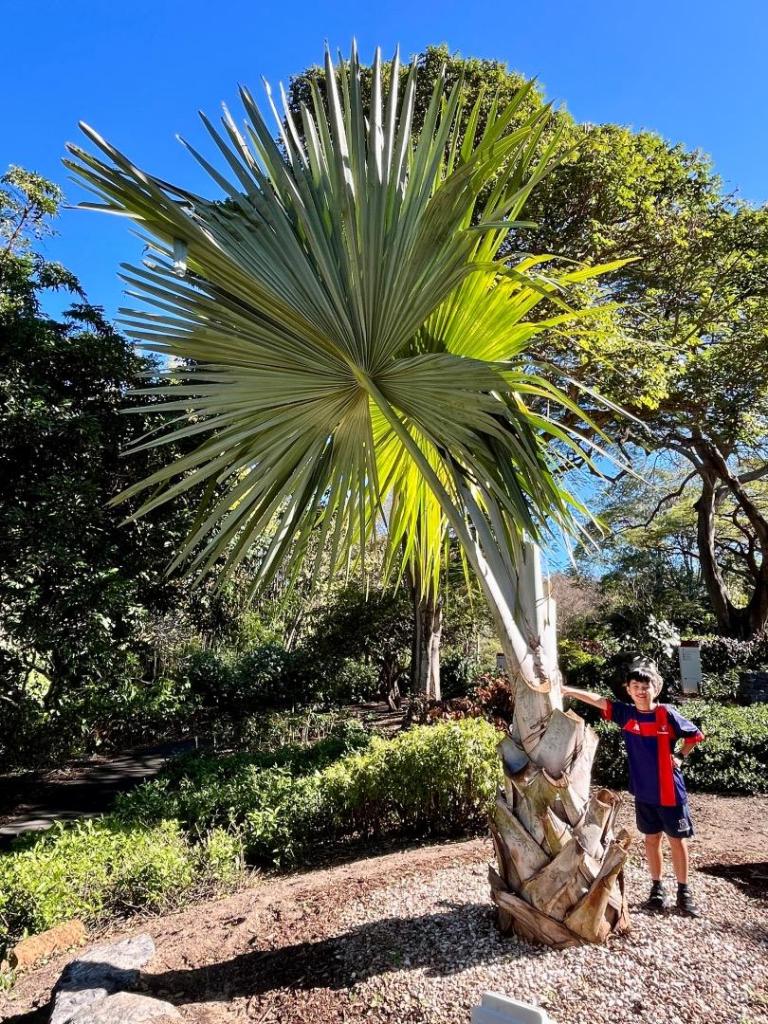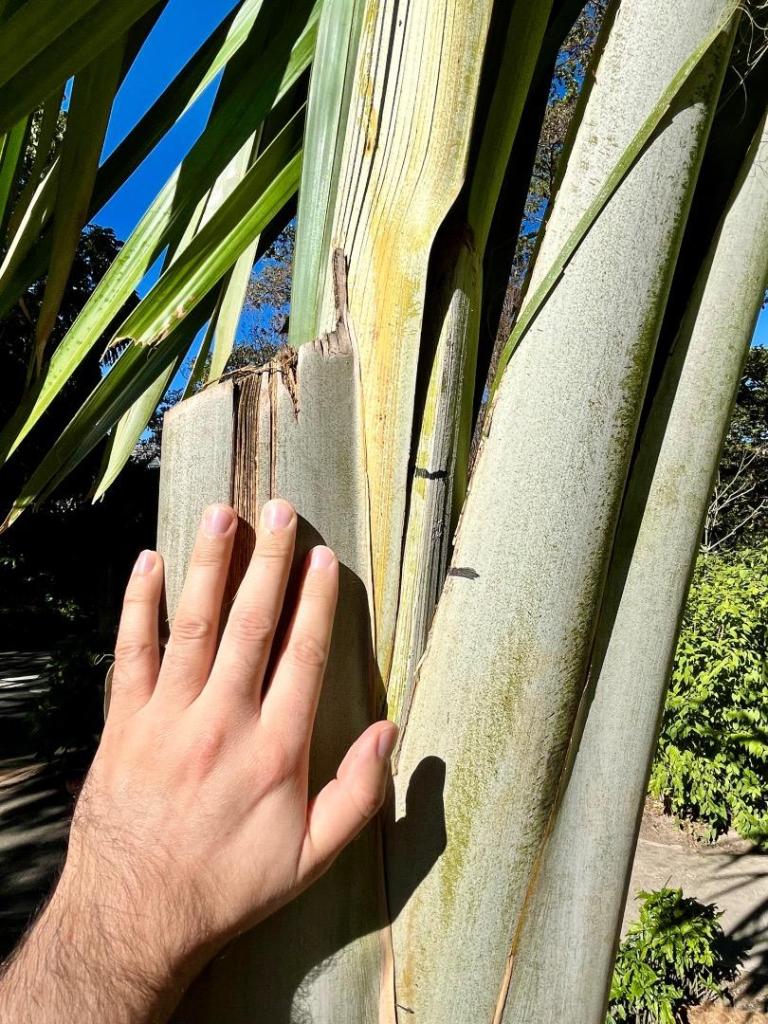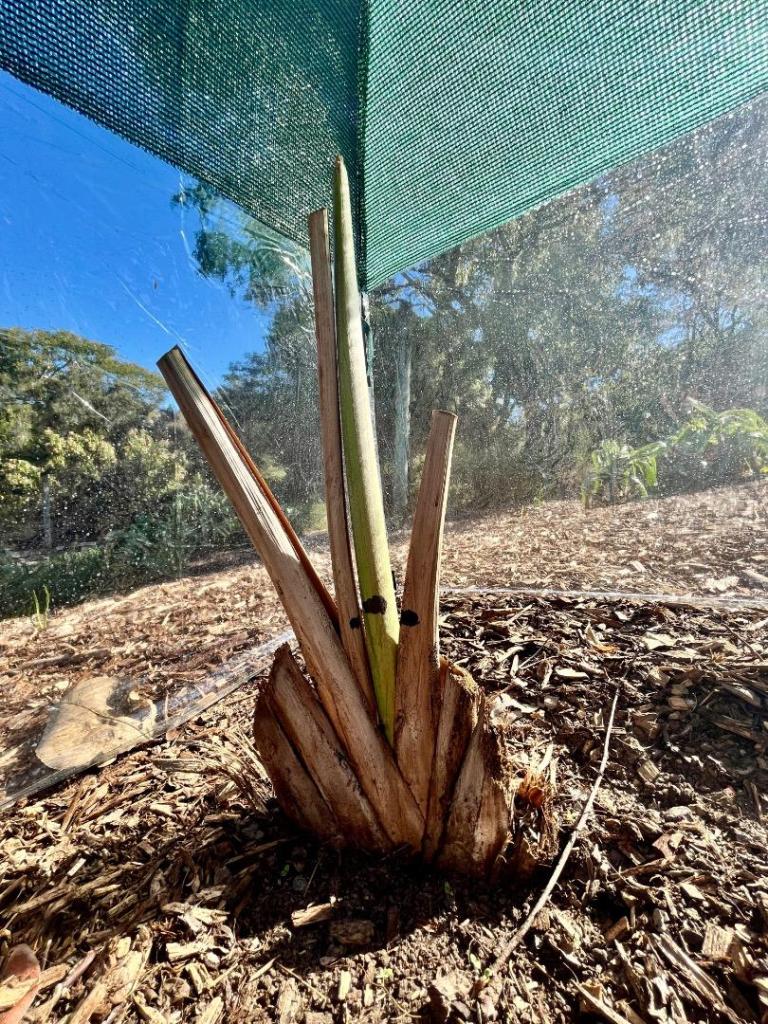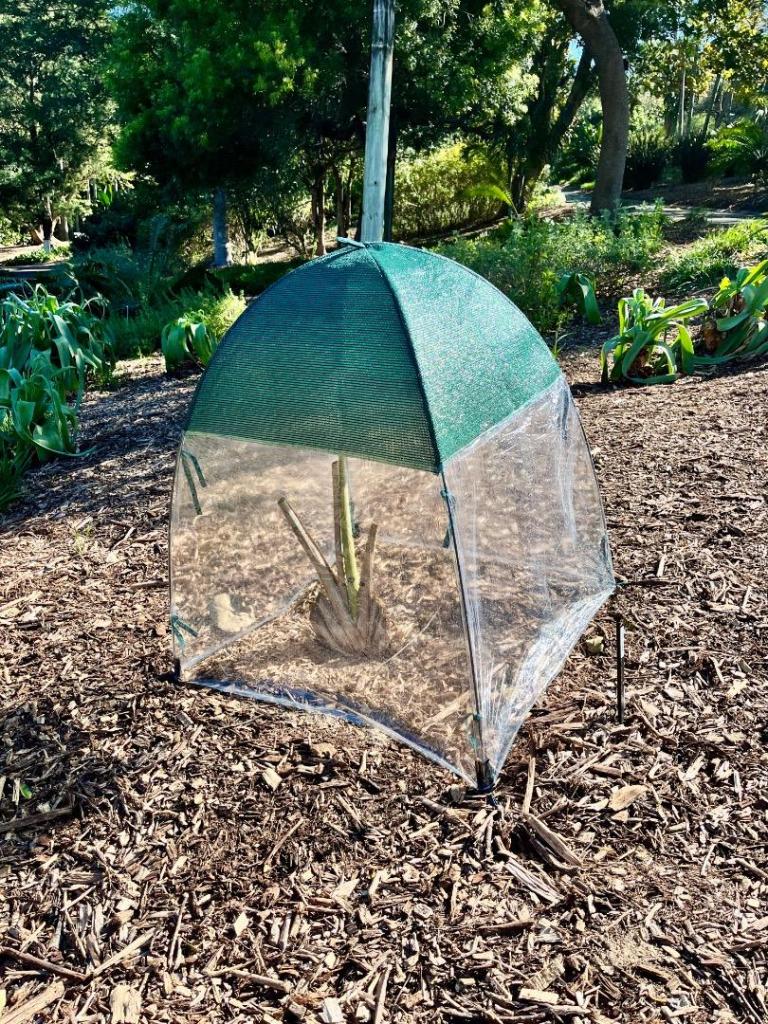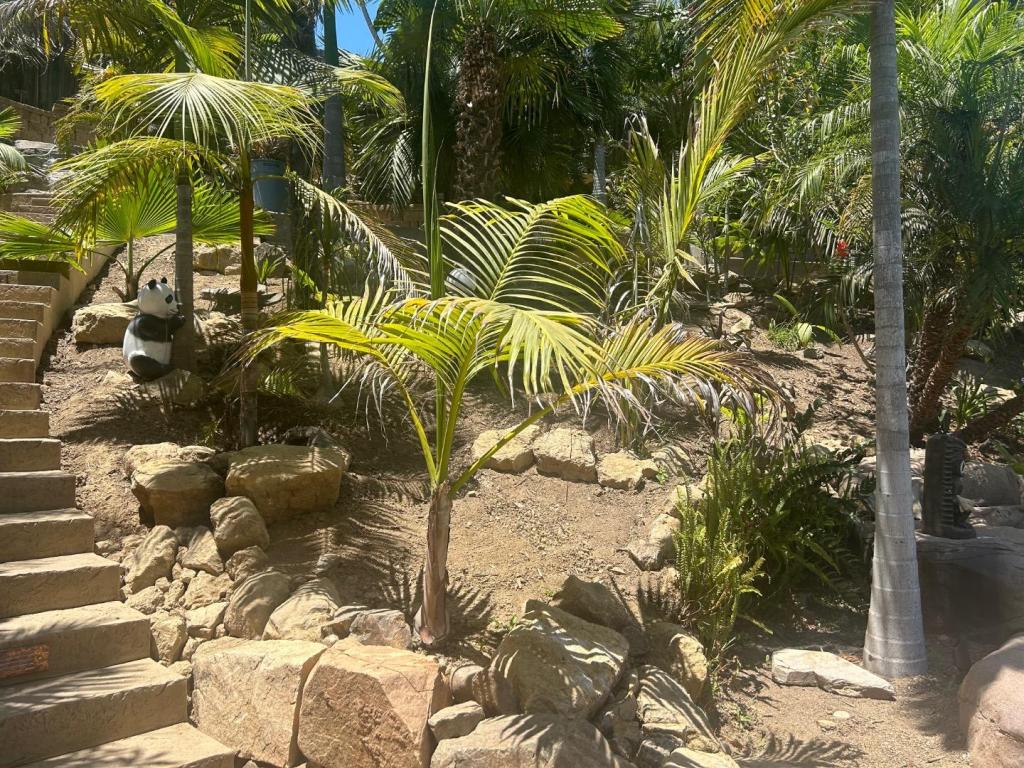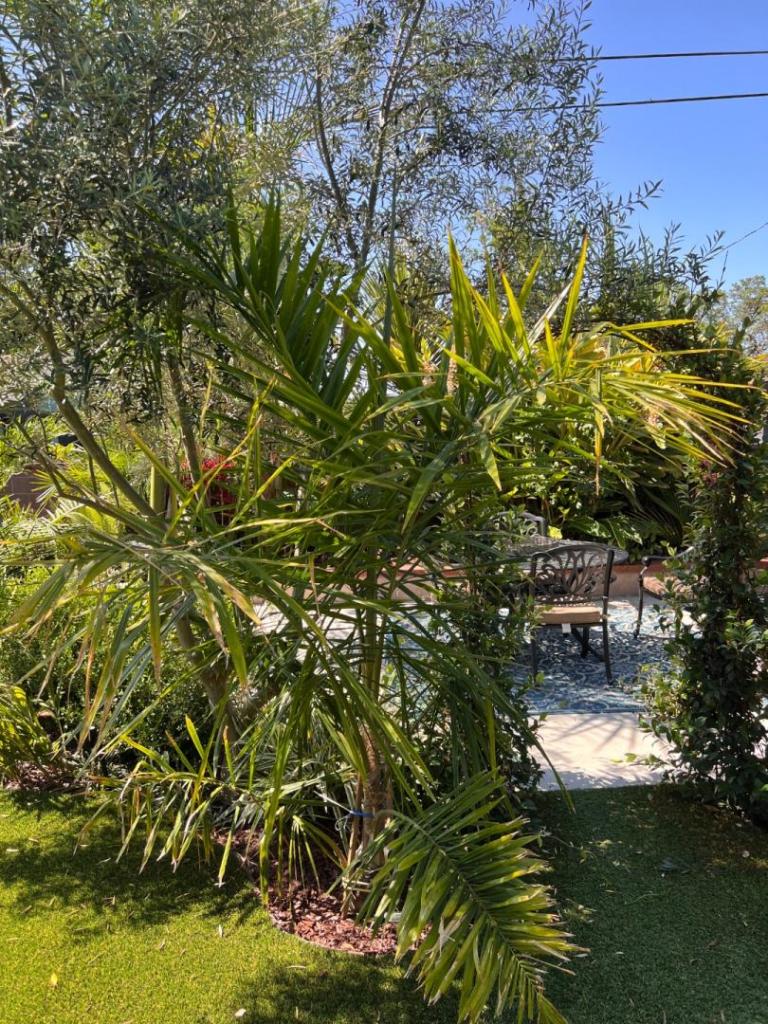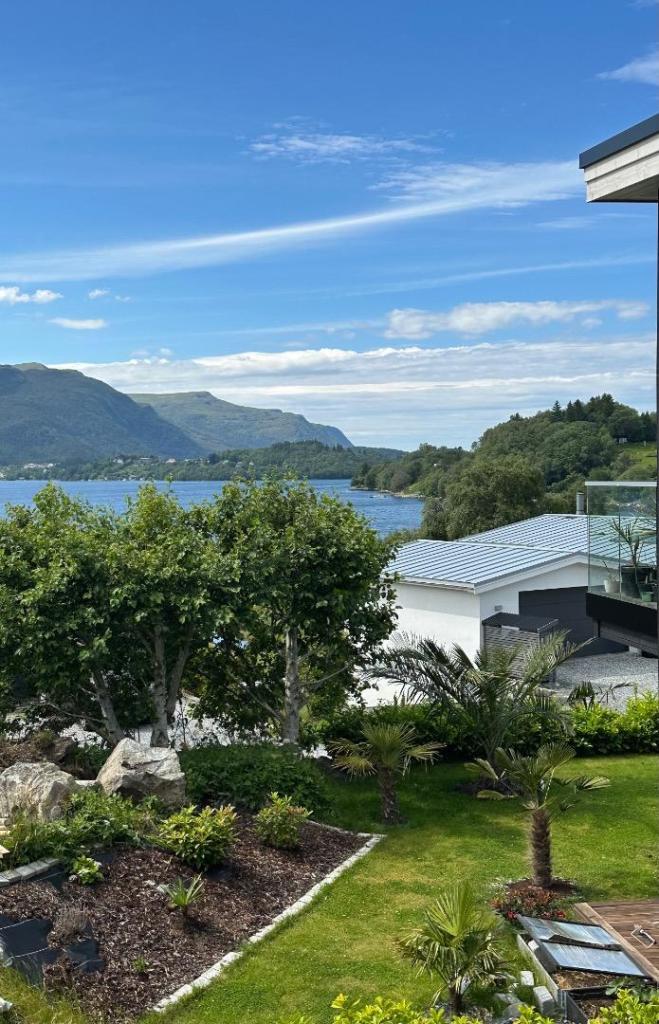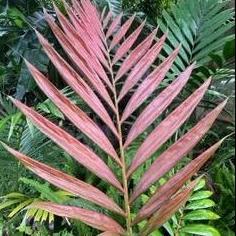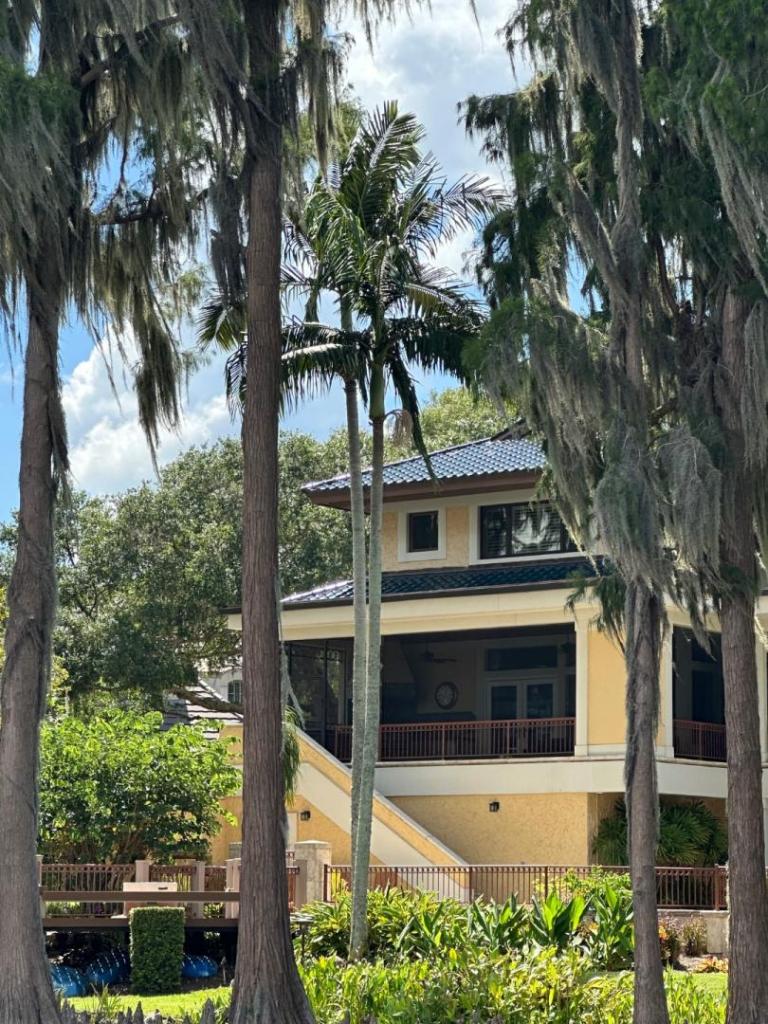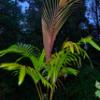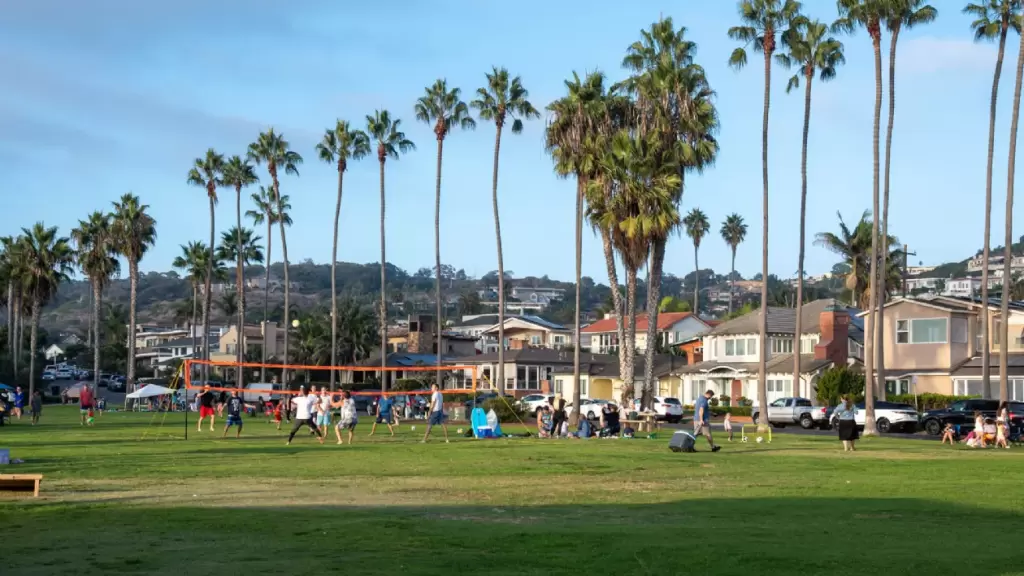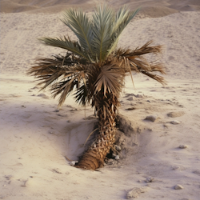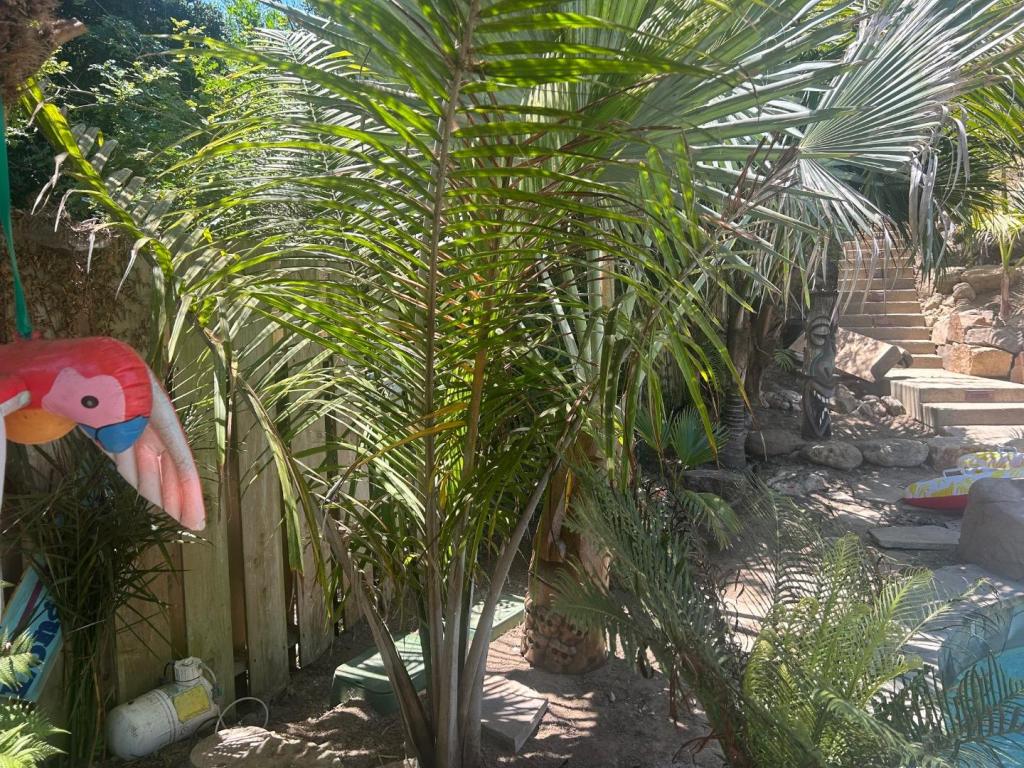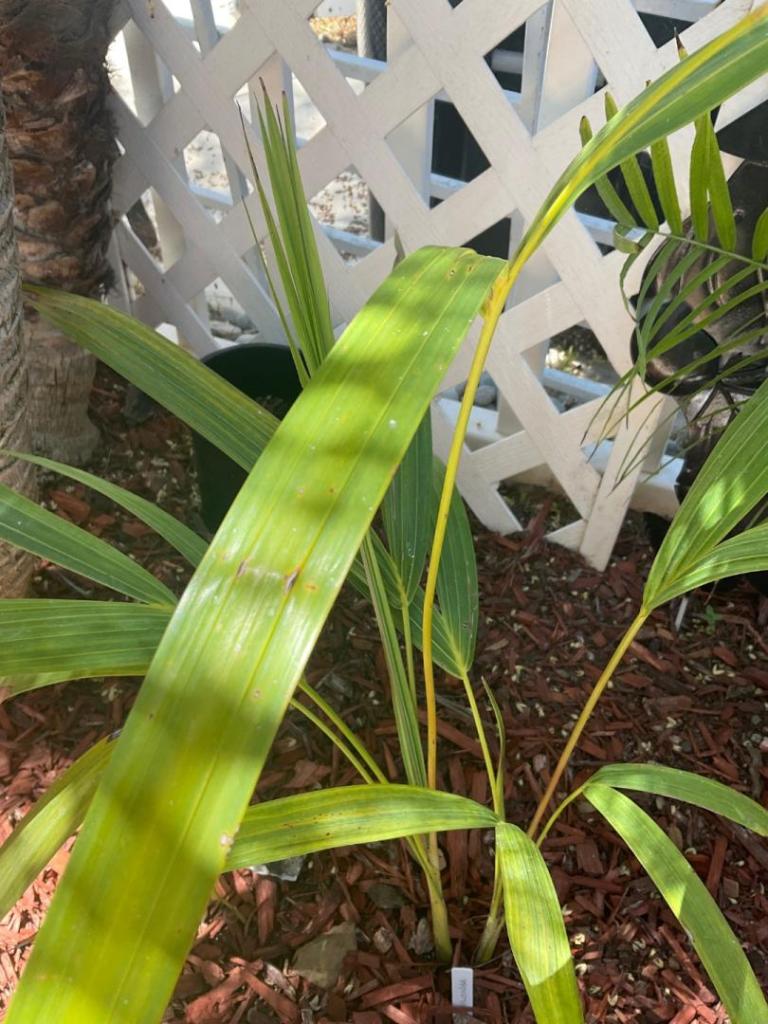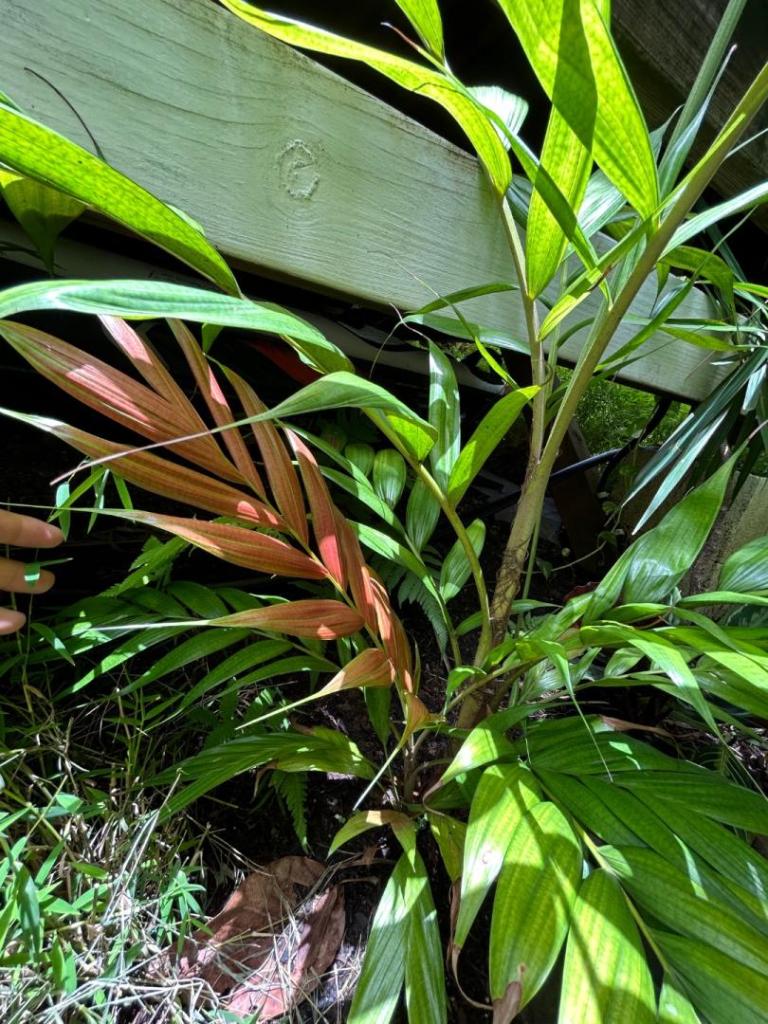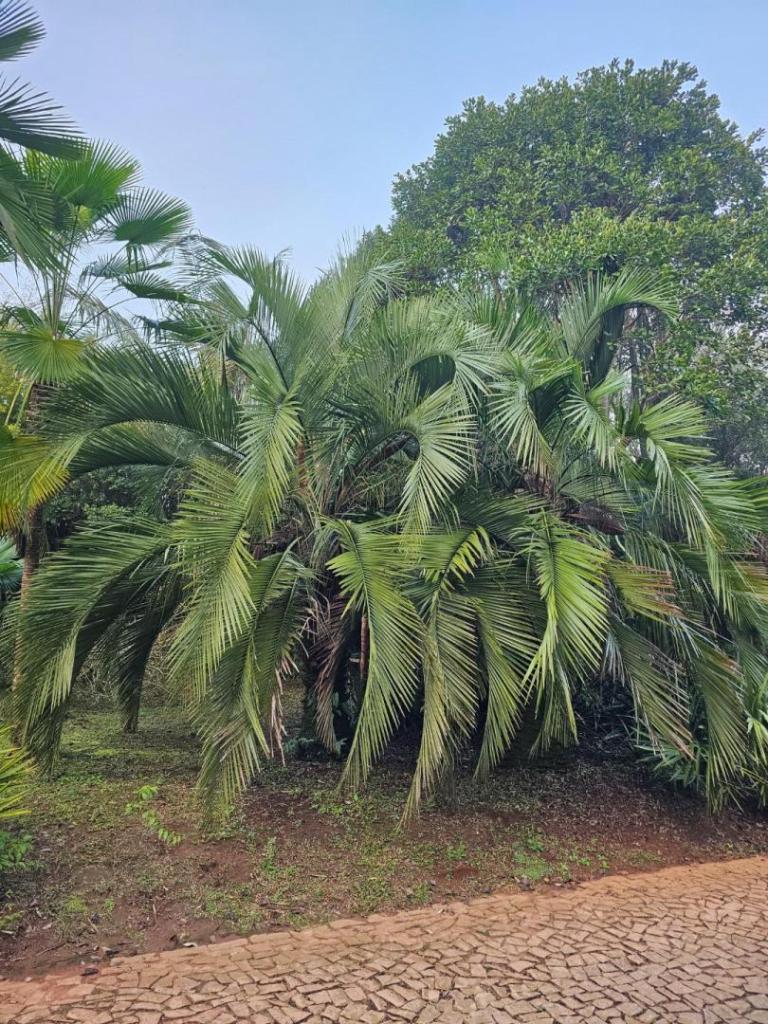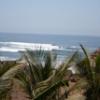Leaderboard
Popular Content
Showing content with the highest reputation on 07/21/2024 in all areas
-
My Pritchardia thurstonii is looking stellar this rainy season. It has almost doubled in size and sports large emerald green leaves. Fast reverse into late last year when I walked past it and saw to my horror that it was coated with mealybugs and probably scale too. They likely were days or a couple weeks into eating it straight to the compost pile. One of the worst mealybug infestations I've ever seen in person. I dashed indoors to shave a bar of ivory soap into a bucket of water, then dashed back outside with soap solution and a couple of soft cotton cloths. I spent the rest of the afternoon gently sponging soapy water onto every inch of that palm and into the crown. Next day I repeated the process. And the next day. And the next. It seemed like no sooner did I eliminate one brigade of bugs then another appeared the following morning. By the time I killed off the palm sucking horde my thurstonii was in chewed up tatters. Still, it survived and here it is today. It still has a tattered leaf or two from its ordeal at the bottom of its crown. Pritchardia thurstonii, Cape Coral, FL July 202411 points
-
Sabal uresana, commonly known as the Sonoran palmetto is a species that is native to the foothills of the Sierra Madre Ocidental in northwestern Mexico. It's habitat is very dry and I had concerns if it would thrive in my not so hot and year round humid subtropical climate ( 1600 mm rain/ year). I have two planted out in the garden. One grew better then the other. The young leaves are blue but the wax is slowly removed by the frequent rains.10 points
-
These are my two, same age as Troy's, from the same lot of seedlings I got from LHI nursery before they stopped sending plants. These were sent as single leaf bare rooted seedlings with seed still attached. Of the 20 I ordered, my two and Troy's are the only two survivors that I know of for certain. Troy's has outgrown my bigger one, which is not surprising as he's a far better grower than me! The other 17 were either given away and perished or died in their pots before I could plant them out. As anyone who has tried growing these would probably agree, they are very temperamental, particularly in pots. I have multiple survivors of a later seed batch but how many will survive to be planted out is the great unknown, as they have a habit of turning their toes up for no apparent reason. Fingers crossed.9 points
-
When I planted a dozen or so strap leaf Sabal seedlings just over the property line of the vacant lot next door in 2008/09 to eventually block view of the abandoned house two lots east, I knew this day would come. Sabal Row was never ours but we hoped whoever developed the property would consider sparing at least some of the palms that formed a wind block that saved our house from damage in Hurricanes Irma and Ian: Sabals maritima x6, palmetto x 4, domingensis x1, and causiarum x1. Our Sabal causiarum may be the only but certainly the largest in Cape Coral. It is my husband's favorite palm and the one we hoped we could convince the builder to spare. But that was not to be. Last weekend the project manager knocked on our door with the ultimatum: all the Sabals had to go. We could try to save them or we could watch them be hacked down and turned into mulch. Still, there is some good news along with the bad. We immediately called PTers Corey and Shelby of Premier Growers on Pine Island to the rescue. Over the years we had discussed with them the growing threat to Sabal Row and the causiarum in particular and they expressed interest in taking in at least some of the Sabals. Turns out that meant even the palmettos. There aren't many/any large trunked, mature Sabals in Cape Coral-Ft. Myers but a niche market of people with property and means to take large Sabals. Corey originally planned to keep only the causiarum and domingensis but later was pondering keeping the others too. So, perhaps Sabal Row will rise again on Pine Island. I took a lot of photos that present the process of trenching and removing very large Sabals - a tutorial for anyone facing the task we did. You will notice that each palm has no rootball. Sabal roots die when cut. The palms must grow new root systems. All leaves must be removed, including the top half of the spear, to reduce transpiration. The bases are wrapped in plastic and the palms placed in a protected area then sprinkled frequently to keep them hydrated. Recall also that Sabal trunks must be wetted down as they also absorb water. So, if you plant a trunking Sabal plan to water the trunk as well as the ground around it. So, let's dig up some Sabals First, an aggregation of equipment needed Final Views of Sabal Row Sabal maritima (Left) and Sabal domingensis (Right) Sabal maritima crowns x2 From the south - Sabal maritima x2 (rear) and Sabal causiarum (right) hh From the west - Sabal maritima x2 Sapal maritima (Left) and Sabal domingensis (Right) Sabal Row canopy from below8 points
-
8 points
-
I walked the Garden Lot around noon today and the heat and swelter were overbearing. I noticed my juvenile Tahina spectabilis has sent up several pristine leaves after growing little in summer 2023 or winter 2024. During Hurricane Ian in 2022 it was crushed by falling Livistonas and Bismarckias. I really thought it was a goner but gradually it produced leaves again from its underground meristem. Summer 2023 was hot and drought-stricken. We got less rain that rainy season than we got the previous winter. Winter 2024 was chilly, cloudy (94+ days of clouds) and wet - just what tropical palms hate and mine limped into spring with a lot of yellow cold-spotted leaves. But since the heat and normal rainfall have returned my beleaguered palms are happily growing again, my lone Tahina included Tahina spectabilis, Cape Coral, FL, July 20247 points
-
Finally, yesterday was Sabal causiarum's time to go. It was a behemoth and I worried it might overwhelm Corey's equipment. I shouldn't have. Final photos of Sabal causiarum in situ Sabal causiarum all alone Trenching around causiarum Corey used the digger to push the causiarum over onto a pillow of fill dirt and palm fronds. Then he used a steel shovel to cut off remaining roots. Once the causiarum was trimmed it had to be loaded for its trip to its new home. Good travels and fare thee well, Sabals. A well deserved ending for what could have been a travesty If you visit Corey and Shelby at their nursery on Pine Island take a moment to visit old friends7 points
-
7 points
-
I just took some comparison shots between my "regular" baronii (from Floribunda) and my "black stem" baronii (from Josh). Again, the thing that jumps out to me is the stark color contrast of the new spears (which are white) against the dark red base. The other difference is that the "Black Stem" baronii has been growing much more slowly. Comparison between two similar age plants (black stem is on the right)... Close-up of the "regular" baronii (from Floribunda)... * Fronds look weird because I'm holding them back with my hand, to better examine trunks. Close-up of my similarly-aged "Black Stem" baronii (from Josh @ Fairview)... * Note the bright white emerging spears, contrasting with the deep red base. Disclaimer: This is the difference on my particular baronii plants. There are apparently a lot of variations of baronii out there. But hopefully this was helpful.7 points
-
6 points
-
5 points
-
5 points
-
Some photos showing some of the steps in digging up large Sabals. Corey spent most of this past week removing the "smaller" palms but left the Sabal causiarum until last. It's so large that the other species just got in the way. Corey "tags" a Sabal palmetto Corey running digger. He started by removing most of the dirt around each palm. Later he continued by hand trenching around each trunk about 3-4' deep, then chops off the roots with a steel shovel. Corey and his helper trenching around Sabals5 points
-
I’ve got a Chrysalidocarpus pembanus/Dypsis pembana that is the neglected stepchild of the yard. In a testament to its suitability to this area, It continues to grow, despite me not really watering or fertilizing it, or paying much attention to it. It puts up suckers that usually crump out over a year, but has had a side low trunk, doinker that has persisted quite a while. Sometime today the doinker jumped ship. It appears that it made some roots of its own, and the main trunk made some roots in the same spot, and they popped free of each other. It was a calm, sunny day. I don’t expect the doinker to survive, and perhaps the wound will take out the main trunk in time. I don’t know. I’m not too worried as my plan was not to keep this guy there much longer. They are fine palms. It was just a bit of a misplant for that spot.5 points
-
5 points
-
4 points
-
Very long and tall first strap leaves compared to most species! How did that pear sized seed fit into that tiny cup? Get it into the ground or a 5 gallon pot already...😄👍 aztropic Mesa, Arizona4 points
-
4 points
-
4 points
-
I'm so glad they are surviving! It cost us a lot of money, and the risk was always great, but glad to see everyon'es efforts (especially Jonathan's) rewarded.4 points
-
4 points
-
4 points
-
I fear the time has come for me to put in to the ground this group of foxtails. Their leaves grow taller than the ceiling og my cold frame and if I miss this year for outplanting, either the cold frame or the plants or both will probably suffer a damage. Spot has been already selected. As a grim coincidence this had been also the last place of a dead Brahea edulis. I intend only to raise the planter to same level with the surrounding paved surface. Before I crossmy fingers though, I would like to know what woukd be the best fill in, so that these plants may have better chances of survival, as they will face my prolonged cool and wet winterl and alkaline natural soil and tap water.3 points
-
3 points
-
Sorry I meant “code worthy” on the previous post. Another shot of the stacked rocks creating a wall, and other rock berms that will hopefully slow down any erosion, and will help hold the mulch in place. To the left is a recently planted Ravenea lakatra, and to the right is a little planting of three sub species of Dictyosperma.3 points
-
Hi all, We’re are pretty much done with the backyard. A layer of mulch is still needed and a few little details here and there, but hopefully we can enjoy the rest of the summer without contractors under foot, ha ha. I thought I would share just a few of the last details. We had a couple elevation issues due to the hillside, not sloping at the same rate as the stairs did. We tried to make the stairs, very cold worthy, but the hillside, of course, has a mind of its own, so… Here are some rocks that we built up around a Clinostigma to better hold the water in. also is a close-up of the light enclosures embedded into the stairs. Super helpful at night.3 points
-
A tear drop for the Sabals leaving, but they're in good hands with @Cbigler and @PalmMom007.3 points
-
It's a ninja secret 🥷. That cup is actually a 32oz cup, so an optical illusion due to the size of the first leaf. Given their hardiness and drought tolerance, this one will probably hit the yard come October. I like all of their family members as well - Medemia argun, Latania spp., and Bismarckia nobilis. Latans are a bit tender, Medemia I can't seem to establish in the ground, but Bizzies and Hyphaene are naturalizing in the areas where they are planted here.3 points
-
3 points
-
3 points
-
Hi I’m new to this forum. I live in Ålesund in the western coast of Norway. Many of you probably think of polar bears, when you think of Norway. My town actually has the warmest winter climate of any Scandinavian city, and the city itself is in US hardiness zone 9a, here at 62 degrees north. My location is between 8B/9A, most years 8B, but with slightly warmer summers than in the city. The record cold the last 30 years was -10 degrees celsius, in 2010. The record high 34,4 celsius (little inland in the city). Winter days average at about 5-6 degrees with most nights above freezing. This winter had a min of -6/7 and high of 16 degrees celsius. Summer days highs average about 19 degrees, With normal range between 15-25 degrees. The huggets this far this year is 30,6 in my garden, which is unormal and a record high for the month of May. This have made several palm entusiasts try different exotics and Trachycarpus can be cultivated without protection here. Also European fan palms, but they May struggle in harsh winters. My Chamaerops has been unprotected for 3 winters. of us have also gotten us a Jubaea chilensis, which is very difficult to get here in Norway. Anyway, here are some pictures from my garden.3 points
-
While boating on lake Louise and Lake Butler on the chain of lakes in Windermere, I noticed a few large fruiting coconuts in the backyards on the water. I took photos of the largest ones, however there were about another dozen or so trunking size coconuts in other backyards too. Also noticed quite a bit of newly planted Royals around backyard pools, and some nice tall cunninghamiana specimens enjoying the lakeside microclimate.3 points
-
3 points
-
Hey all - I am located in 9b on lake Apopka in Orlando, Florida area. In May of 2023 I planted a 65 gallon Beccariophoenix in the ground. it has been bullet proof. A few real cold nights and 40+ mile an hour winds. It’s a tank in the wind. my question is - from how the palm looks now - how long should I expect to wait until the palm develops a trunk? Maybe 5 years from now? 7? also for whatever it’s worth. My take on the palm is that if it is planted correctly it is super strong and resilient - but it doesn’t seem to grow that fast. I would say that mine hasn’t “taken off yet”.3 points
-
@Liamchandler Looks like Ravenea rivularis commonly known as a Majesty Palm.3 points
-
Another one of @DoomsDave Dypsis . Happy in its new home. This one a Dypsis Lanceolata , already showing growth. I spear marked it to the next petiole to show growth. That is about 3 weeks ago. HarryThe petiole on the right has a black line where the new spear was when I planted it.It looks like this one may clump by the way the base looks.3 points
-
3 points
-
3 points
-
3 points
-
Water it thoroughly daily if possible. These palms are aquatic and need constantly wet roots to look their best. Also magnesium addicts. They need more than most species.3 points
-
2 points
-
Next one up is a palm of a bit of concern. Ravenea sp. “giant” which had to have its root ball hacked on three sides in order to get the irrigation lines run. There was just no other way to do it. Its older leaves started yellowing about a month ago, although the three newer ones are still perfectly green and the spear is pushing. So, fingers crossed on that one. Losing that one would really hurt, but I’m hopeful. Also a sample of the uprights that we had installed. 28 of them throughout the yard.2 points
-
2 points
-
2 points
-
2 points
-
2 points
-
2 points
-
2 points
-
2 points




